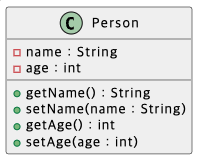What is PlantUML?
PlantUML is an open-source tool used to create diagrams from a simple, human-readable language. It is used to create UML diagrams, flowcharts, network diagrams, and other types of diagrams. PlantUML is written in Java and runs on any operating system that supports Java.
How to Create Diagrams with PlantUML
Creating diagrams with PlantUML is easy and straightforward. All you need to do is write a simple text-based description of the diagram you want to create. PlantUML will then generate the diagram based on the description.
The syntax used to describe diagrams is based on the Unified Modeling Language (UML). UML is a standard language used to describe software systems. PlantUML supports all of the UML diagram types, including class diagrams, sequence diagrams, activity diagrams, and more.
To create a diagram, you need to write a description of the diagram in PlantUML syntax. The syntax is simple and easy to learn. Here is an example of a class diagram written in PlantUML syntax:
@startuml
class Person {
-name : String
-age : int
+getName() : String
+setName(name : String)
+getAge() : int
+setAge(age : int)
}
@enduml
This code will generate a class diagram that looks like this:

Once you have written the code, you can generate the diagram by running the PlantUML command-line tool. You can also use an online PlantUML editor to generate the diagram without having to install any software.
Getting Started with PlantUML
PlantUML is a powerful tool for creating diagrams from text. It is a simple, yet powerful language for creating diagrams quickly and easily. PlantUML is a great way to quickly create diagrams without having to learn a complex graphical language.
To get started with PlantUML, you will need to install the software. PlantUML is available for Windows, Mac, and Linux. Once you have installed PlantUML, you can start creating diagrams. PlantUML is a text-based language, so you will need to write out the diagram in text.
The basic syntax for PlantUML is very simple. You start by declaring the type of diagram you want to create. For example, to create a class diagram, you would use the following syntax:
@startuml
class MyClass {
-field1
-field2
+method1()
+method2()
}
@enduml
This will create a basic class diagram with two fields and two methods. You can also add relationships between classes, such as inheritance or composition. For example, to create a class diagram with an inheritance relationship, you would use the following syntax:
@startuml
class ParentClass {
-field1
-field2
+method1()
+method2()
}
class ChildClass extends ParentClass {
-field3
+method3()
}
@enduml
This will create a class diagram with a parent class and a child class, with the child class inheriting from the parent class.
Once you have written out the diagram in text, you can then generate the diagram. PlantUML supports a variety of output formats, such as PNG, SVG, and PDF. You can also embed the diagram in HTML or Markdown documents.
PlantUML is a great tool for quickly creating diagrams. It is easy to learn and use, and it supports a variety of output formats. With PlantUML, you can quickly create diagrams without having to learn a complex graphical language.
Conclusion
PlantUML is a powerful tool for quickly creating diagrams from text. It is easy to learn and use, and it supports a variety of output formats. With PlantUML, you can quickly create diagrams without having to learn a complex graphical language. PlantUML is a great tool for quickly creating diagrams and is well worth exploring.